Saturday, April 12, 2014:
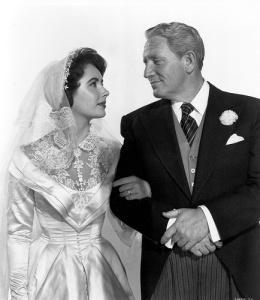
Father of the Bride was delightful as always. Godzilla was so much fun to see with a crowd and boy was the crowd enthusiastic! This screening was the world premiere of a new restoration of the original Japanese version of Godzilla, in all its Raymond Burr-free glory. The picture quality was absolutely stunning. If you have the chance to go see this restoration on the big screen, I very highly recommend it. Godzilla was introduced by historian Eddie von Mueller and Gareth Edwards, director of the upcoming Godzilla movie.
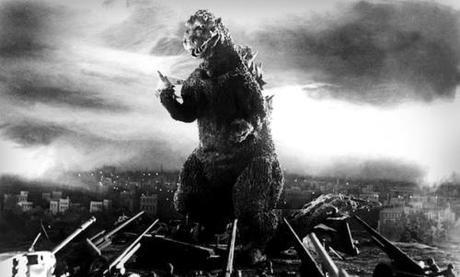
From Godzilla, it was back to Club TCM to check out the conversation with editor Thelma Schoonmaker hosted by author and historian Cari Beauchamp. In addition to Schoonmaker’s long collaboration with director Martin Scorsese (her work on his films has won three Academy Awards), she was an editor on the groundbreaking documentary Woodstock and was married to legendary British filmmaker Michael Powell, half of the Powell and Pressburger team. (Fun fact: Martin Scorsese was also an editor/assistant director on Woodstock. Scorsese brought cufflinks with him to Woodstock because he thought they’d be going out to dinner while they were there.)
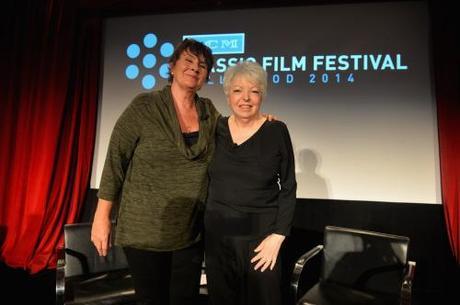
Photo courtesy Getty Images
Of the movies she’s done with Scorsese, she discussed Raging Bull the most. Raging Bull was a very challenging film to edit because there was so much improvisation from the actors; a challenge revisited with Scorsese’s most recent film, The Wolf of Wall Street. She doesn’t visit the sets of his movies because she thinks it’s important to have a cold eye in the editing room. Schoonmaker credits Scorsese with teaching her everything she knows about editing because he’s a director who thinks like an editor. As for what quality Scorsese most admires most in her, he knows he can trust her. Ever since the time in film school when she helped him fix his student film that hadn’t been cut properly, he’s known she will do what’s right for his films.
Schoonmaker spoke very fondly of her time with husband Michael Powell. She’s very active in preserving her husband’s film legacy and also introduced his film A Matter of Life and Death at the festival. She plays a role in overseeing the restorations of Powell’s work and mentioned that after this conversation, she was heading out to check some work on a transfer on one of his films. If you are hoping to see a HD print of The Tales of Hoffman, you’ll be glad to know that she said the original negative is in excellent condition.
Next up was “Hollywood Home Movies: Treasures from the Academy Film Archive.” We were treated to rare behind-the-scenes footage and personal home movies of film legends. This was a must-see event for me because I knew it would be a totally unique event that I wouldn’t be able to attend elsewhere. I was definitely not disappointed; the home movies we saw were absolutely fascinating.
The selections included home movies of Florenz Ziegfeld and Billie Burke, an extremely playful Alfred Hitchcock at home with Alma and daughter Pat, Jean Harlow in her dressing room, visitors to Hearst Mansion (including a cameo from Howard Hughes), Gilbert Roland and Constance Bennett with friends on their boat, behind the scenes footage of Gone With the Wind, the It’s a Wonderful Life wrap party picnic, Walt Disney riding on a backyard railroad, location footage of Oklahoma!, behind the scenes of Jerry Lewis on The Geisha Boy, and a montage of movie stars with their pets and other animals.
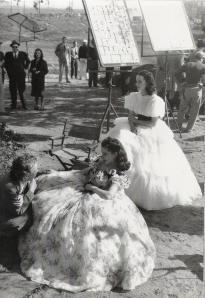
Behind the scenes of Gone With the Wind
My favorite clips were the Ziegfeld/Burke home movies, which included Florenz Ziegfeld frolicking with a butterfly net and a pet elephant trying to walk into daughter Patricia’s playhouse; the Hitchcock home movies; and Jean Harlow in her dressing room. I found the Jean Harlow footage particularly interesting because it wasn’t official, studio-sanctioned footage; it appeared to be filmed by a friend or MGM employee who was casually testing out their personal home movie camera. So it doesn’t show “Jean Harlow the movie star,” it’s Jean being herself, chatting with the camera operator and rubbing her eye. Even when she wasn’t being “Jean Harlow the movie star,” she was captivating to watch. The hosts from AMPAS said they could tell from some grain on the film that it had originally been filmed in color, but unfortunately, they only had a black and white copy.
The Gone With the Wind behind the scenes footage was a real treat. It was color 8mm footage that showed Vivien Leigh with her stand in, Clark Gable riding horses with Cammie King, and the setups for filming the scene at Twelve Oaks where Scarlett is surrounded by all the men at the party and the scene where Rhett and Scarlett are on their honeymoon and are having dinner with the can-can dancers in the background. I was also thrilled to see the It’s a Wonderful Life picnic since that was something Karolyn Grimes had talked about when I saw her at the Redford back in November.
The types of film used for some of the home movies were also unintentionally revealing about the types of people who used it. The Ziegfeld/Burke home movies were filmed on 35mm, something that would have only been used by the very wealthy in the early 1920s. The Hitchcock home movies, which dated from 1929-1936, were in color, so it should come as no surprise that he was definitely a person on the cutting edge of film.
After “Hollywood Home Movies,” I made a quick stop at McDonald’s for a very nutritious dinner of french fries (dinner of champions, I know) before heading over to the Chinese theater for A Hard Day’s Night. I was really torn between seeing A Hard Day’s Night and Bell Book and Candle introduced by Kim Novak over at the Egyptian. I had been leaning more toward Bell Book and Candle, but I really wanted to see something at the Chinese theater and I was starting to worry that I might not get to see anything there, so A Hard Day’s Night won.

Photo courtesy Getty Images
Beatlemania may have started 50 years ago, but it was still going strong at TCMFF. I couldn’t have asked for a better venue to see A Hard Day’s Night in. Their sound system is wonderful, so it was a dream to hear all those Beatles classics that way. The picture quality was absolutely pristine. The Chinese theater seats over 900 so it was packed with a lot of enthusiastic fans. The excitement was palpable and I loved every minute of being a part of it.
A Hard Day’s Night was introduced by Alec Baldwin and record producer Don Was (who has produced albums for Ringo Starr, The Rolling Stones, Bob Seger, Bob Dylan, just to name a few). Their introduction was one of my favorite introductions of the festival; it was hard to not be engrossed by their enthusiasm.
Then it was time to head to the El Capitan to get in line for The Women. I joined Raquel (Out of the Past), K.C. (A Classic Movie Blog), and Lara (Backlots), who are exactly the kind of people you want to be in line with to see The Women. I had so much fun discussing the movie and quoting the famous, “There’s a name for you ladies…” line in unison.
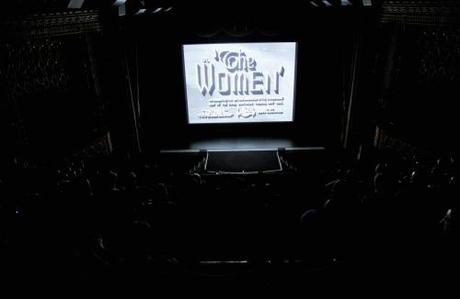
Photo courtesy Getty Images
Over the course of TCMFF, I saw a lot of movies with very enthusiastic crowds, but I think the crowd for The Women took the cake. I’m used to people applauding for certain things like a star’s entrance or a name appearing in the opening credits. Since this is a movie with such an incredible cast, there was a lot of applauding going on. The crowd went wild for Norma Shearer saying, “I’ve had two years to grow claws, mother! Jungle red!” It’s a fabulous movie to watch at home and even better to see with a crowd. Actress Anna Kendrick introduced the movie with Ben Mankiewicz. Much shade was thrown at the 2008 remake.

The last movie of the day was the midnight screening of Freaks. I honestly don’t remember a whole lot about this screening since I was pretty exhausted by the time I got there. But I’m glad I had to check out one of the ultimate midnight movies on the big screen.
And I just love the fact that I started this day with Father of the Bride and ended it with Freaks.
